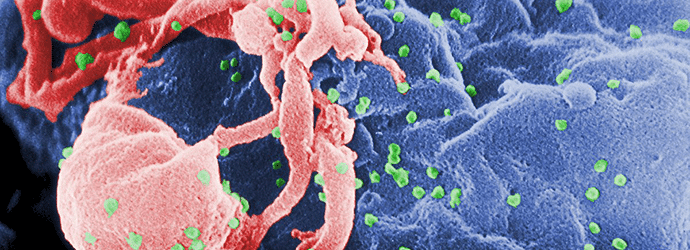12 Top Tips for Working in a Biosafety Cabinet
Biosafety cabinets keep your work safe from contamination, and you safe from your work. So here are 12 tips for Working in a biosafety cabinet!
Join Us
Sign up for our feature-packed newsletter today to ensure you get the latest expert help and advice to level up your lab work.

Biosafety cabinets keep your work safe from contamination, and you safe from your work. So here are 12 tips for Working in a biosafety cabinet!

Do you know what each ingredient in cell culture media does? Read on to take a look at the common ingredients and break down their roles.

While using serum in cell culture can keep your cells healthy and happy, there are some notable downsides. We discuss the pros and cons of using serum in cell culture media and how to remove it if you want to eliminate it from your workflow.

The use of viral delivery systems to transduce cells for gene and protein investigations has become prominent over the last 20 years. In particular, the use of lentiviral vectors permits stable expression of your gene of interest. This is all possible with a little bit of nucleic acid magic. Lentiviruses (a genus of retrovirus) express reverse…

Whether you work with human cell lines or microbes, their growth is governed by the same principles. I invite you to learn about something that lies at the base of any work with cell culture, whether cells have circular or linear chromosomes: the S-curve of the population growth. The length of each phase depends on…

Tissue culture can sometimes seem like a black art. Too careful—your cells go down. Not careful enough—your cells go down. A butterfly flutters its wings in the middle of the Atlantic Ocean—your cells go down. It’s annoying, it’s frustrating, and there are times (and I’m speaking from personal experience here) that you’ll end up chucking…

An anti-cancer drug or antibody drug conjugate (ADC) screening assay is the first step to establish the utility of a drug candidate in killing cancer cells. Nevertheless, these assays are time consuming and tedious. The purpose of this article is to make things easier when you are required to set up these in vitro screening…

While using human clinical samples in your research can provide robust and heterogeneous results applicable to larger portions of the population, working with these samples presents its own set of challenges. Here are some tricks I have learned to help isolate and grow your cells of interest while eliminating stromal, blood, or other undesired contaminants….

Are you preparing to set up live cell imaging experiments? You’ve got all your cell lines, antibodies, reagents, and protocol ready. You just want to wake up in the morning and enter into that dark room. Well, think again!! As we (I mean the cell biologists) always say, happy cells mean happy life. You have…

So you want to work with mouse B cells? Primary murine B cells are a difficult, yet fascinating system to work with and can help deepen your understanding of an immunological system. You can study many things with primary B cells, including: These cells can be fickle to work with, but here are a few…
Rust spots provide a good shelter for bugs, which will get there one day, and from the rust into your tissue culture. Here’s what you can do to deal with the problem as soon as you see it.

Producing lentiviral or retroviral vectors is theoretically fairly straightforward. However, anyone new to viral vector work is usually confronted with vast amounts of confusing information. It seems that anyone who has ever made a lentivirus has their own protocols and is adamant that their method is the best one to follow. In reality, there are…

We have to rely on artificial systems to test our hypotheses and often have to come up with original set-ups to investigate specific problems. One of these creative inventions is the use of supported lipid bilayers.

Three dimensional cell culture mimics the extracellular matrix (ECM) that offers the structure and support for cells in vivo, thus creating the complex architecture and network required for cellular communication. For 3D cell culture beginners (or enthusiasts), the information available may seem overwhelming. It sure was for me. But it can be simplified. For example,…

Recently we wrote an article about widespread cell culture contamination and how to detect it. This follow-up article will provide practical tips on avoiding cross-contamination in the first place. Be Cautious While Working The first way of cross-contaminating cultures is by accidentally mixing two cultures together, which may lead to an unintended co-culture or the displacement…

While working in a UK university, I met a researcher who loved Italy much more than the UK. I asked her why she had left her favourite country. She told me that before coming to the UK, she had a 2-year fellowship in Italy where she was getting some promising results and had the chance…

Apart from lung cells, surprisingly few cells are ever exposed to 20% oxygen, which is one of the reasons it’s hard to get in vitro cell cultures to behave. Read more about whether 20% oxygen is always the best level for cell culture and why it became the standard amount to use.

The eBook with top tips from our Researcher community.